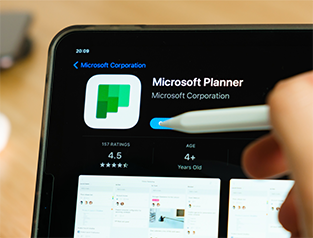In a recent episode of The MOWO Show, I was asked a question about Microsoft Planner, which got me asking myself, "Will Microsoft sunset Planner this year?".
My feelings are mixed about the app because it simultaneously has a lot going for it and yet, some major shortcomings that can prevent it from realizing its full potential.
Whether you’ve been using Planner for years or you’re brand new, here are a few things you should know about Planner going into 2022.
1. Planner Sports a Very Intuitive User Experience
One of the things that has led many of us to Microsoft Planner is the fact that its user interface is quiet simple to learn and adopt. In my own opinion, Planner can be better for small projects than Excel because of its simplicity.

At the end of the day, tasks are tasks and buckets are just task lists. Add some data, assign it to a team member and they’ll be notified in Teams and/or by email.
2. Planner is (still) Dependent on Microsoft 365 Groups
If you’ve ever built your own Planner boards, you’re probably aware of its (possibly controversial) dependency on Microsoft 365 (M365) Groups. If you’re not sure what M365 Groups are, check out this terrific explanation by Collaboration Coach.
In 2022, this is less of an issue. We use Microsoft 365 Groups for almost everything, even if you aren't aware of it. If you have access to Team Channels or a SharePoint Team site, you’re part of a Group.
Then why is this a problem? Because everyone in your M365 Group automatically gains full access and EDIT permission to any Planner board created within the group.
If you need privacy or strict control of your project tasks, look elsewhere. If it goes into Planner, it is accessible.
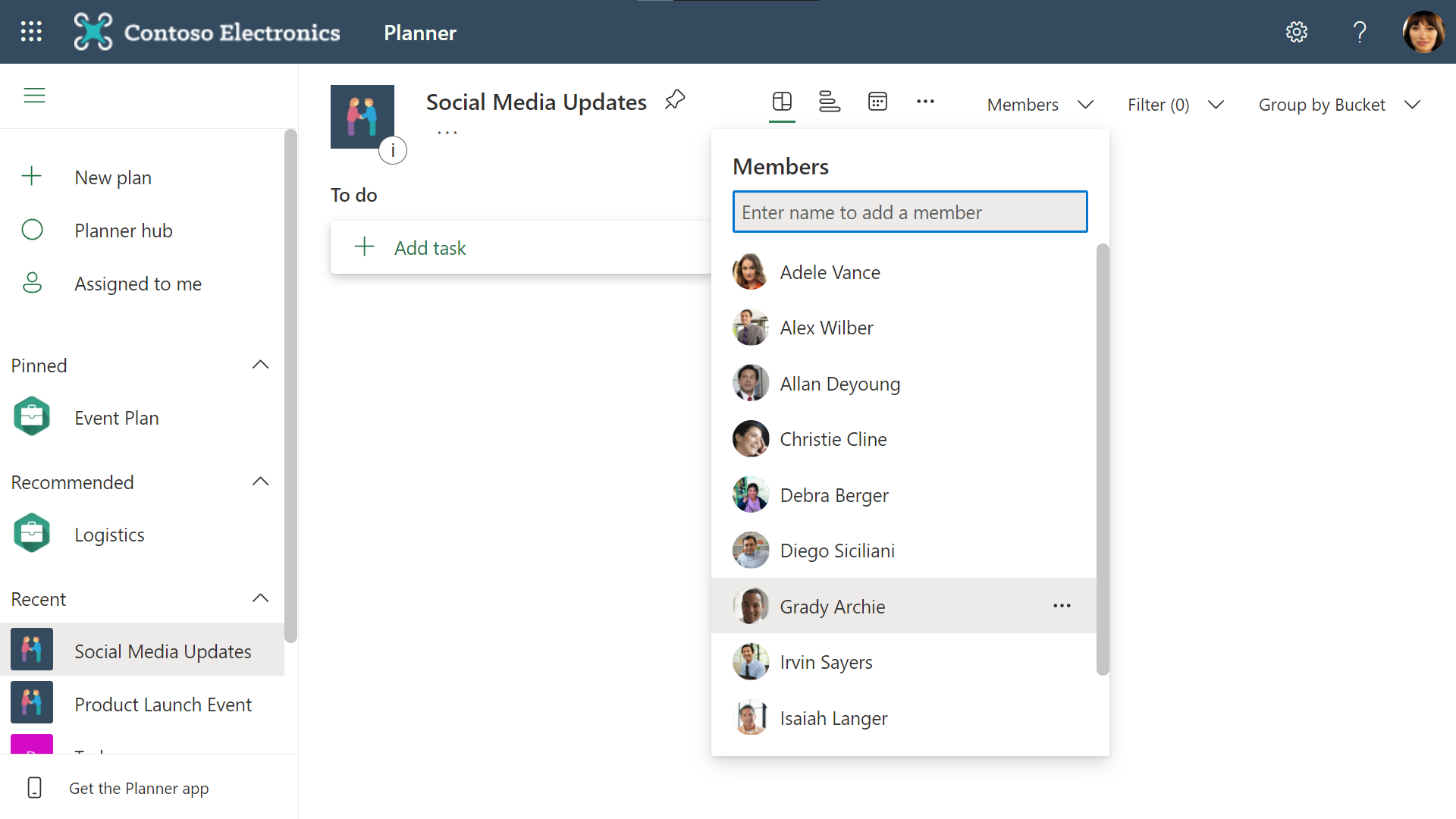
One thing long-time Planner users (including myself) have been waiting for is the ability to create individual Planner boards that exist outside of a Group. Plans to do this were announced in early 2021 but not much has been formally announced since then.
At the time of writing this, there is nothing in the Planner roadmap to suggest we will eventually get individual boards in the near future.
One can still hope though.
3. Planner Boards Cannot Be Protected or Restored
This is where you need to make a judgment call on whether Planner is the right fit for you and your team.
Now that we’ve established that anyone in your Group can access and modify anything in your bucket, what can you do about it? The answer is sadly... very little if anything at all.
First, you cannot modify user permissions in Planner, period. User permissions are inherited from the Group and cannot be changed within the application.
Next, there is no recycling bin to restore deleted tasks or buckets. Once they’re gone, they’re gone.
And the cherry on top of this is that Planner does not log user activity anywhere within the app. That means we have no insight into who has been in our boards adding, modifying and/or deleting content.
.jpg?width=425&name=Untitled%20design%20(2).jpg)
Thanks for the notification, Planner. Can you tell me what the changes were? No? Okay then...
This inability to recover deleted board content, identify who has modified boards, and the inability to prevent users from doing it in the first place makes for a perfect storm of a project manager’s nightmares.
So at the end of the day, just remember that Planner is for short-term work that doesn't require a detailed audit trail.
You can take snapshots of your data using the Export to Excel feature for record-keeping purposes, but this is a one-way transaction. You cannot use that same file to import data back into Planner. At least not without hiring a Power Automate wizard to build a custom tool, or exploring 3rd party solutions.
This is why I often refer to Planner as a task manager, not a proper project management solution. You can absolutely use it for projects, but now you know the risks and can plan for them.
4. So What CAN We Leverage Planner for in 2022?
Coordinating Small Projects from a Team Channel
It’s of my humble opinion that Planner is at its best when used from a Team channel.
While the user-experience of Planner in Microsoft Teams doesn’t have all of the features that the full web app does (such as "smart backgrounds"), the Teams app does bring a few of its own tricks, such as List View, Tab Conversations, (limited) activity notifications and the ability to create tasks from chat and channel messages.
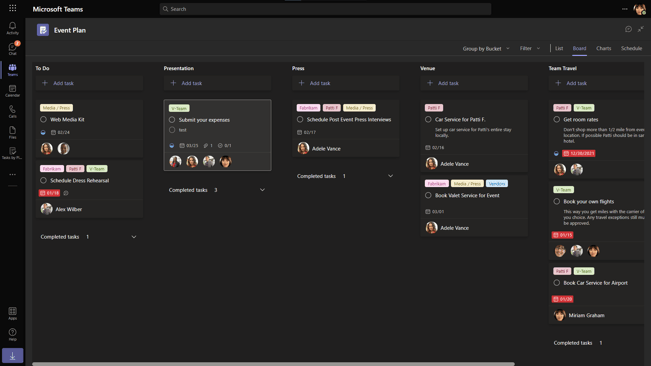
Planner in a Team Channel. #darkmodeallthethings
Visual Project Planning
In the hybrid workspace, where we can be working remotely one day and at the office the next, it’s arguably more important than ever to ensure everyone knows what they’re responsible for with any given project.
Planner is a rather terrific tool to help non-project managers capture the work required to execute their next project in a visual way. Buckets and tasks are easy to setup with the key information and resources
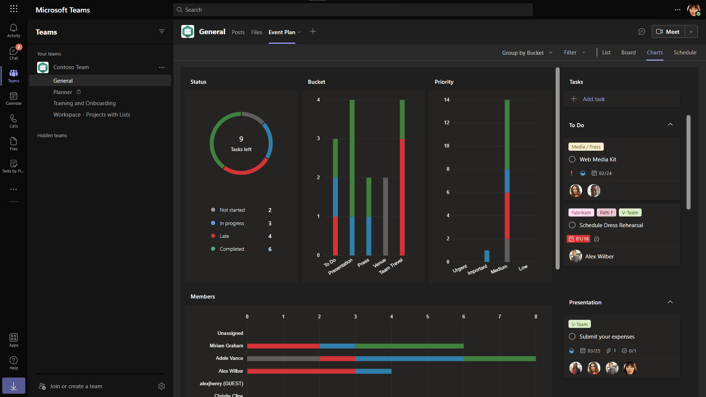
"Charts" in Planner for some quick progress insights
In the past, we learned how to leverage Excel for tracking project work. However, unless you and your colleagues live and breath Excel spreadsheets daily - it’s not an ideal choice. Updating project statuses can a time-consuming and non-linear process to simply understand where your project is at
In Planner, you can even view your project status instantly, no pivot tables required. Additionally, you can see your project tasks in a weekly and/or monthly calendar view to ensure the timing makes sense. Even go as far as syncing it with Outlook if you want.
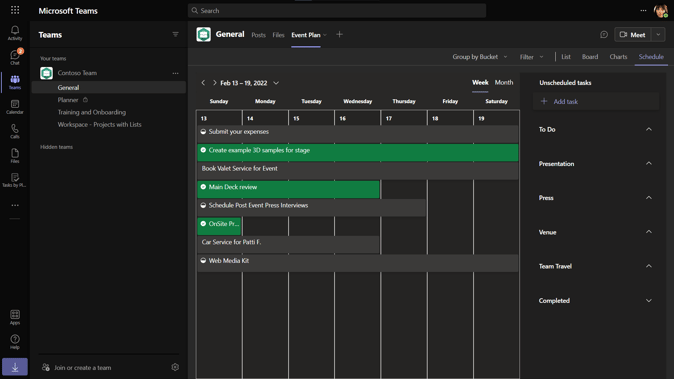 "Schedule" view in Planner to see your tasks on a weekly and monthly calendar
"Schedule" view in Planner to see your tasks on a weekly and monthly calendar
Final Thoughts
Whether or not Planner is a feasible tool for projects in 2022 is going to be entirely up to you and how your team needs to collaborate. At the very least, there’s little risk in trying it out for a while before committing to anything long-term.
Planner is going to be six years old this summer, and it is starting to feel like a mature (although flawed) task manager application in the Microsoft 365 suite.
What will the future hold for Planner in 2023 and beyond? At this moment it’s hard to say as the product roadmap is quite bare as of writing this.
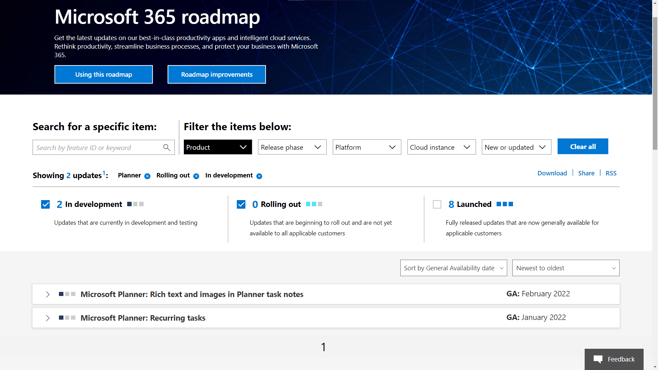 Microsoft 365 Roadmap for Planner as of January 2022
Microsoft 365 Roadmap for Planner as of January 2022
We can only speculate whether this means development is being slowed down for other initiatives, or Microsoft is planning something big for Planner. Myself, for one, am hoping for the latter.
Thanks for reading!

